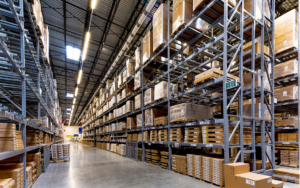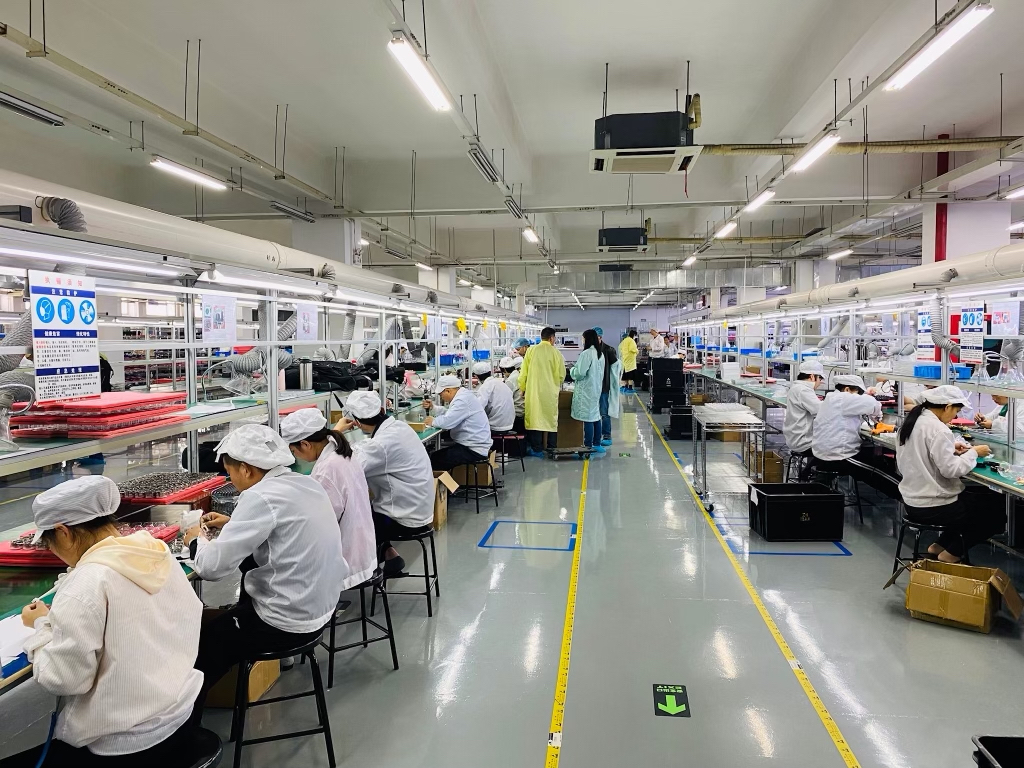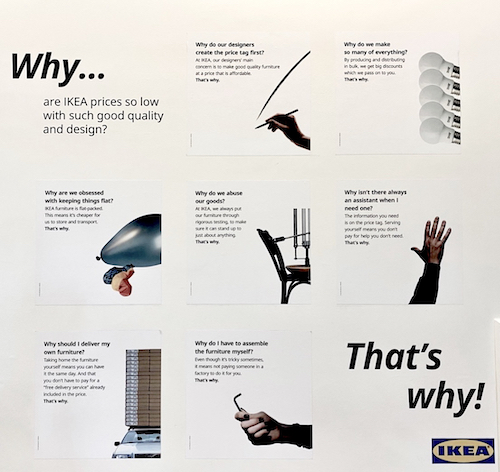People are always getting attracted by super low-priced products in stores like IKEA, Costco, Walmart, and even in some corner stores. Buyers are shopping around the world to get products built at super low cost. To most businesses, a super low price tag is one important ingredient to a killer product in the marketplace. What is the secret to creating a product with a super low price tag?
Well, it’s not really a secret because it’s posted on the wall of IKEA stores. They work off 7 basic principles (“7-Rules”) and they are listed below:
 Design to Cost: select the price and quality the market can handle, then design to those points.
Design to Cost: select the price and quality the market can handle, then design to those points.- Keep things flat: package products in flat, nonfancy, packaging to achieve low shipping cost, globally or locally, and no fancy packaging (can save 15% sale or more on total cost)
- Customers Pickup Themselves: to cut costs for the last leg delivery (which could be 40% of the logistics costs)
- Customers Assemble Themselves: to save final assembly cost from the manufacturing end (and help keep product flat)
- Customers Shop With Little To No Service Needed: to save service cost on the store floor, tags/packaging is easy to read and understand (no high cost “golden” touch)
- Sell more stuff Produce and buy in bulk: to create volume deals across many items (bulk prices)
- Test products: to improve quality to save cost for returns (quality and reliability)
Although these principles are as obvious as they are shown everywhere at IKEA, very few businesses can follow through with them on their product development. Most of the time, people can forget about their original thought process, and get carried away by other inspiring ideas.
Without a low-cost advantage, in the end, they will have to sell the product based on other values only and compete against those products that are forged by these “7-Rules”. Well, to be fair, it is not easy to have a new product developed that meets all these criteria. However, frequent checking on these rules will help in not drifting too far away.
When examining new products, you will find that most in the market do not follow any of these “7 -Rules”. Thus, product sales are based on their features, functions, feels, forms, technologies, services or other value adds instead of low cost. However, it would be very helpful if your product can meet at least one or more of these “7 -Rules” that will save tons of cost.

How do you do it? Starting from what you have, you control it as a system engineering task from concept design to final product distribution. Furthermore, from a manufacturing cost analysis, lower-cost products must have four basic characteristics: simplicity on design, low cost on material usage, simple manufacturing process, and high volume.
- Simplicity on design: The original design philosophy is the foundation of a super low-cost product. First of all, the product needs to be made with fewer parts. People often use smart tooling designs to combine multiple functions to reduce the number of parts. Generally speaking, the product should have a short BOM list, and less integration of parts that are made with different technologies, although it sounds like controversial thought to conventional creativity.
- Low-cost material or low cost on material: As a second must, the product is to be built with less material or cheap alternative material. At the end of the day, a heavy product will never be cheap. For smart design, people always position the material used on the “borderline” which is good enough for consumers.
- Low cost or highly standardized manufacturing process: Thirdly, low-cost products are easy to make, or at least easy to use an automated process to make. Through tooling designs, fewer human interactions are required for its assembly. This could mean a high initial investment in tooling, molds, or equipment, which could be a gamble for a new product introduction.
- High volume: Obviously, the high volume allows all tiers of manufacturing to amortize their NRE cost/set-up fees on the supply chain and value chain. With a major discount of materials, other overhead costs can also be shared on top of huge volumes. The benefits come from entire contractor echo systems from the material distributor, parts manufacturers, sub-assembly manufacturers, assembly factories, and logistics and distribution networks.

The IKEA 7 rules and manufacturing cost structures, all emphasize the control of the original conceptualization of a product and manufacturing engineering from the very beginning. The balance is art or “magic”, which explains why business acquisition pays so much money for a great product. The sale volume tends to be a chicken and egg dilemma because of the market acceptance. The more rules a product meet, the lower the cost. Regardless, it is always good to have these ideas on your mind just to know where you are heading to.

